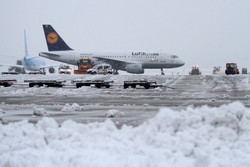Towards a 'hybrid' ice protection system
Clean Sky is a unique public-private partnership between the European Commission and the aeronautics industry devoted to the greening of aviation. Among the technology demonstrators that make up Clean Sky, Systems for Green Operations (SGO) looks to define flight profiles optimised to meet multiple criteria and improve the management of aircraft energy. As part of the management of energy, new architectures and technologies for a more electrical aircraft are investigated, including power generation, conversion and storage. Thermal management will be improved by the optimisation of hot and cold sources on board the aircraft. In this context, different types of wing ice protection systems are explored. Researchers working on the EU-funded project HETEMS (Hybrid WIPS design code) undertook the task of testing emerging low-power electromechanical ice protection systems and conventional high-power electrothermal systems as well as their combination. The aim was to develop and validate theoretical models for 2D and 3D numerical simulations and integrate them into a single software suite. Before the HETEMS project, such a modular tool was not available for the analysis of electrothermal and electromechanical systems under realistic in-flight icing conditions. For the verification and validation of the newly developed tool, high-quality data were obtained in the ice wind tunnel of the Italian Aerospace Research Centre (CIRA). For this purpose, prototype ice protection devices were used on a full-scale wing tip section of a business jet aircraft. The success of the test campaign represented a significant milestone in development of the new tool for modelling ice protection systems. Based on the results of comparisons between measurements and predictions, recommendations were also made for tests to determine additional mechanical failure properties. HETEMS results, which promise an overhaul in the design of hybrid ice protection systems, were presented at the 2015 SAE International Icing Conference held in June 2015 in Prague.







